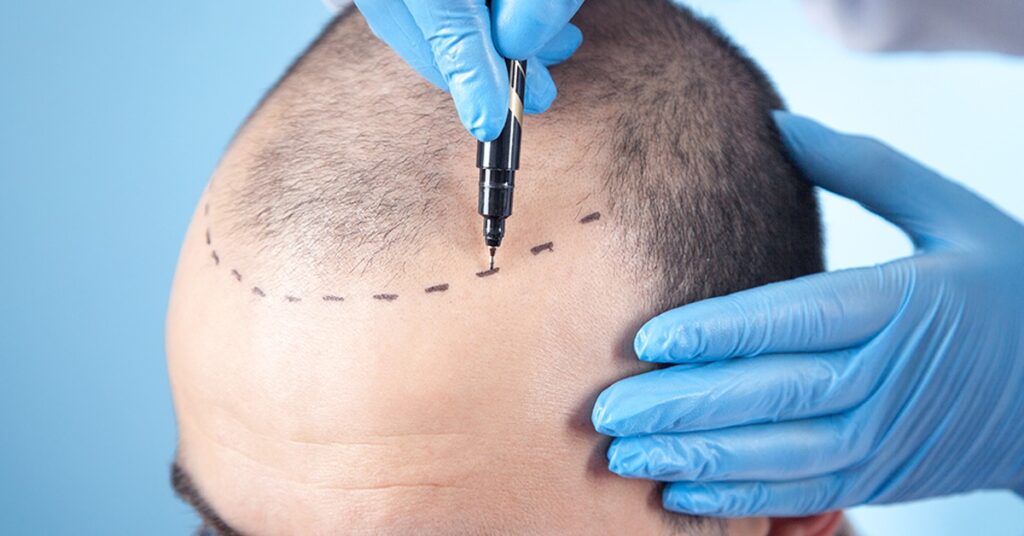Hair transplantation is permanent if done on a healthy scalp and the patient does not have any underlying medical issues that cause hair loss. Hair is transported from the back and sides of the scalp to bald or thinning parts of the head. Because the transplanted hair is normal hair, it will grow normally when it is inserted. It is important to understand that the “newly transplanted” hair will begin to fall out six weeks after surgery. This is only a transitory phase, and new hair will come out of the graft in five to six weeks.
The transplanted hair, like natural hair, may thin with time. After the transplant surgery, you will require a surgical “touch-up” to achieve more natural-looking results. These will be performed many weeks after your first cuts have healed. Some people may require numerous attempts to achieve a full head of hair.
What is a Hair Transplant?
At Cliniq, a Hair Transplant Clinic in Hyderabad we consider a successful hair transplant that adds extra hair to the scalp’s balding or thinning patches. It is usually accomplished by removing hair from another portion of the scalp (donor site). Because androgens (male hormones that contribute to hair loss) do not govern this area of the scalp, it does not bald. Hair from other regions of the body may also be used.
Preparation for the procedure:
The “donor area” must be clipped short to allow for simple access and removal of the hair to be transplanted.
- A numbing agent will be injected into the scalp by your Hair transplant Surgeon.
- Wounds in the donor site will be healed and closed when the harvest grafts are recovered.
The harvesting and transplant procedure:
- Punch grafts, mini-grafts, micro-grafts, slit grafts, and strip grafts are performed on patients with little bald regions during the harvesting and transplant operation.
- Flaps, tissue expansion, and scalp reduction are operations used for patients with severe baldness.
The following are the many hair transplant techniques:
- Strip harvesting: The surgeon removes tissue strips from the donor areas of the scalp. These strips are inserted into bald areas. These strips cause new hair to grow in the bald region.
- Follicular unit extraction (FUE): During this procedure, the surgeon extracts individual hair follicles from the scalp. He cuts microscopic incisions in your scalp and inserts hair follicles.
Post-procedure protocol:
- The transplanted area is bandaged with sterile gauze and antiseptic ointment, and the surgeon may inject triamcinolone (steroid) into the scalp to reduce swelling.
- You will need to take antibiotics, pain relievers, vitamins, and drugs to encourage hair growth.
- You will not be able to lift weights, exercise, or engage in sexual activity for one to three weeks after the surgery.
Is it true that hair transplants work?
-
A half-inch of hair growth per month is to be expected.
Results will be visible in three to four months and will continue to improve throughout the year. The hair will fall out in three to six weeks, and you may appear to have less hair than previously. This is typical. That hair will regrow in the next months. To activate dormant hair follicles, medications such as Propecia (finasteride) and Rogaine (minoxidil) may be administered.
-
Grafts can perish in some instances. Such people may require a repeat operation.
It is possible that several surgical sessions will be required to obtain acceptable hair growth. It is normally advisable to wait several months between sessions. If necessary, an extra touch-up procedure to fill in the frontal hairline and improve the overall appearance may be performed.
If you looking for the Best Hair Transplant Clinic in Hyderabad, you are at the right place. Hair Transplant surgeons at Cliniq provide the best hair transplant treatment.
